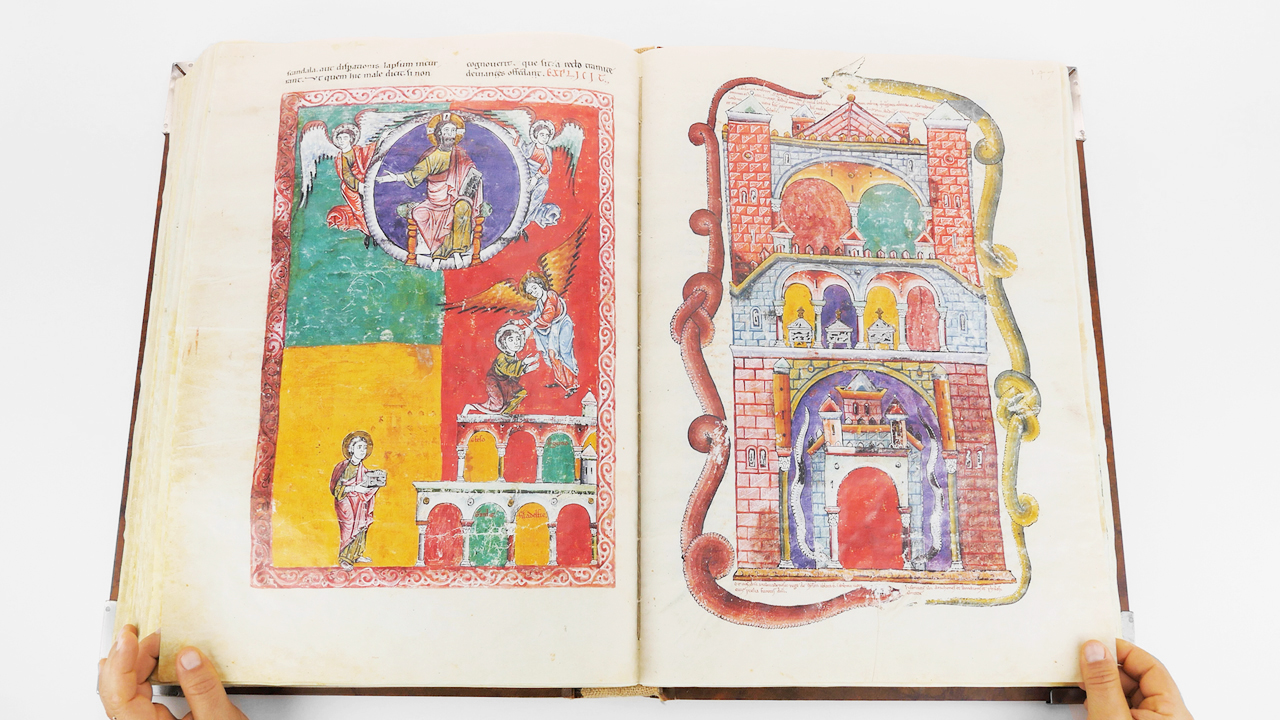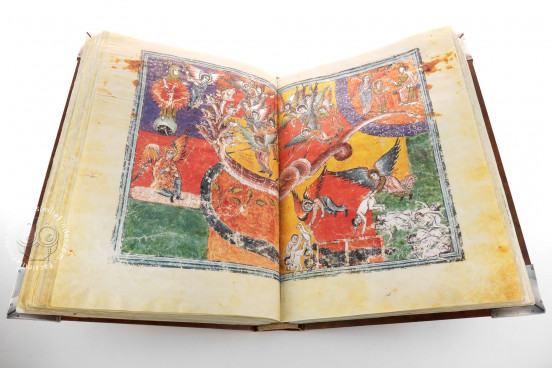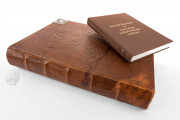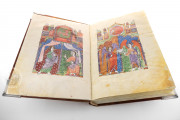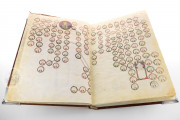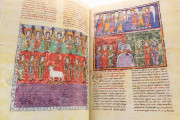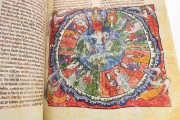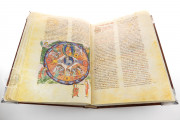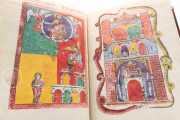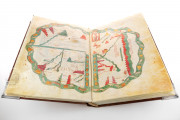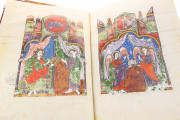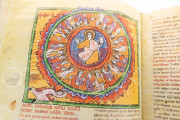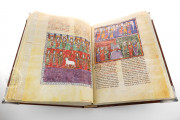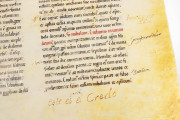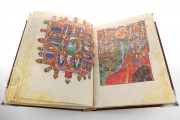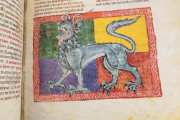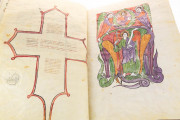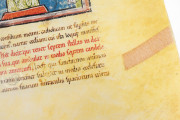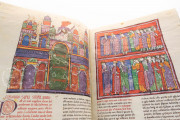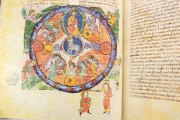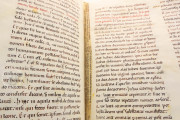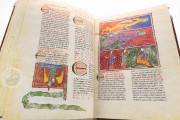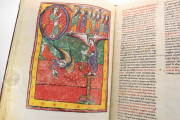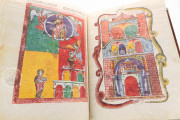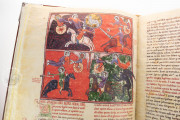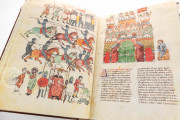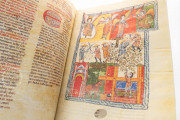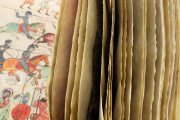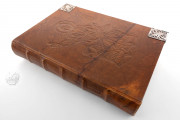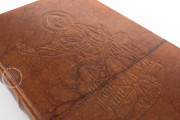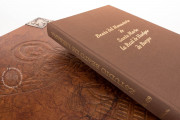The Las Huelgas Beatus takes its name from the Castilian monastery of Las Huelgas in Burgos, the monastery where the manuscript was discovered in the late 1860s. The original text dates to circa 775, when the Asturian monk Beatus wrote an explanatory piece of one of the most cryptic and imaginative books of the Bible.
Beatus was motivated by his calculation that the world would end in 800. The commentary became a fundamental source of inspiration for illuminators who enriched the text with colorful and vivid illustrations. These miniatures illustrating the book of the Old Testament are attributed to the Master of Toledo.
The Originality of the Las Huelgas Illuminations
The Las Huelgas Beatus, in addition to the extensive illustrations of the Beatus manuscripts, presents a series of illuminations rarely found in other books, displaying scenes taken from the Book of Genesis along with the Adoration of the Magi.
Original iconographies are also discernible in the Angels Holding the Arms of the Cross of Oviedo, the image of Christ in Majesty, the depiction of the Evangelist Portraits accompanied by witnesses, the illumination of Saint Michael Slaying the Dragon, and a full-page representation of the letter Omega.
The illuminators painted the imaginary scenes with vibrant colors typical of the Spanish illumination.
_____
For more information on the Beatus model, read our blog article by Amy R. Miller (PhD, Medieval Art History, University of Toronto).
We have 1 facsimile edition of the manuscript "Beatus of Liébana - Las Huelgas Codex": Apocalipsis de San Juan. Beato de Liebana. Monasterio de Las Huelgas facsimile edition, published by Scriptorium, 2004
Request Info / Price
